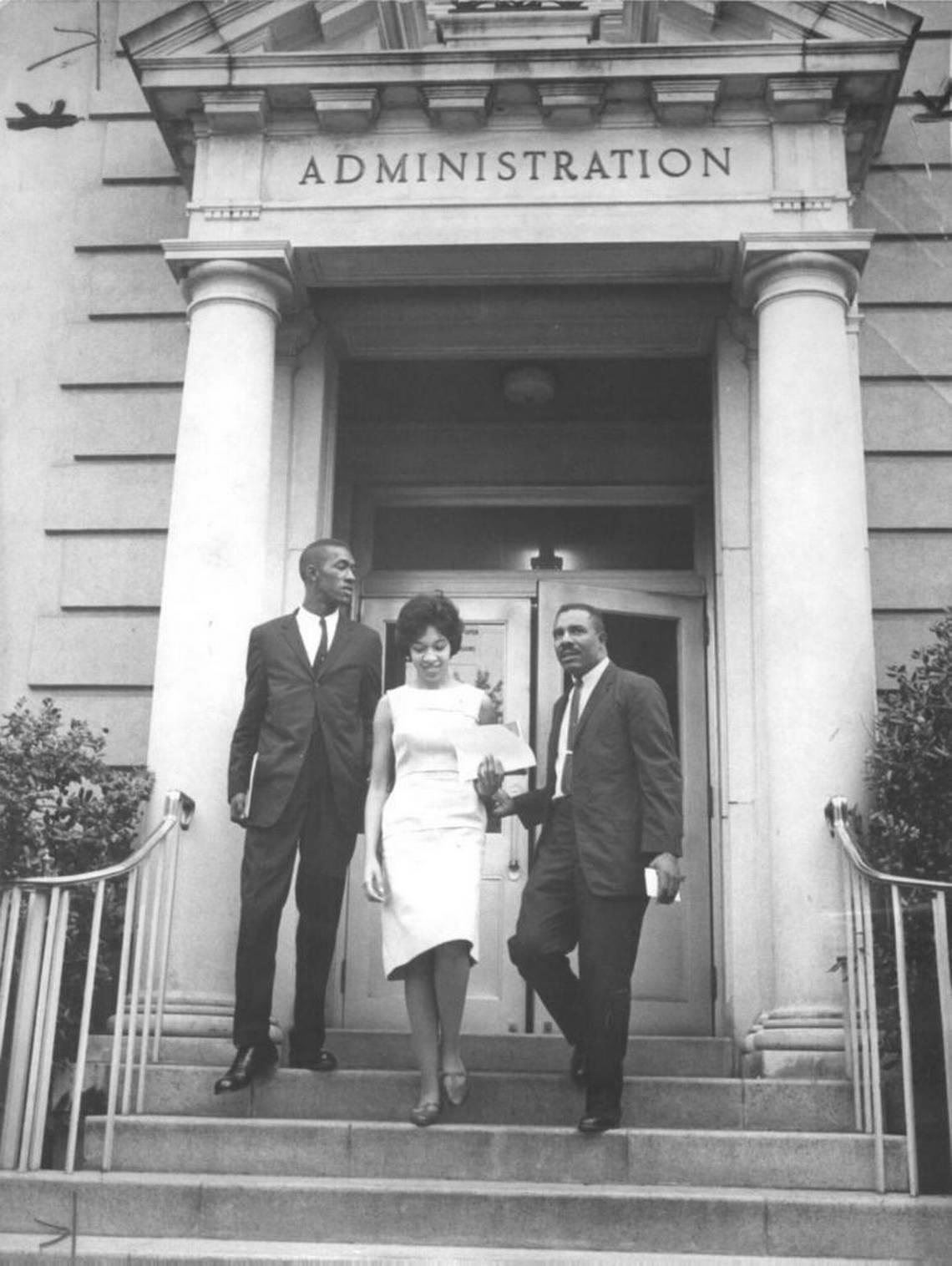USC reveals design of a new sculpture commemorating the university’s desegregation
Nearly 60 years ago, three students — Henrie Monteith Treadwell, Robert Anderson and James Solomon Jr. — were the first Black students admitted to the University of South Carolina since the Reconstruction era.
Their first moments as students will be shaped in clay, cast in bronze and have a permanent place on campus to celebrate this turning point in the university’s history.
“They demonstrated grace and bravery and they altered the history of this university and this community,” said Thad Westbrook, chair of the USC Board of Trustees. “The board believes (they) deserve to be celebrated in a monumental fashion.”
Treadwell, a Columbia native, went on to become the university’s first Black graduate since the 19th century. Treadwell said the sculpture is an opportunity to acknowledge those who sought to desegregate Southern universities following the Supreme Court’s Brown v. Board of Education ruling in 1954.
“I hope that alumni, faculty, (and) students will continue to think of ways of permanently recognizing the value of what has been done on that campus,” Treadwell said in a news release. “People must understand that my walking across that threshold was not the end of the story. My walking across that threshold was the beginning of a story.”
The board chose internationally-acclaimed sculptor Basil Watson to create the monument, which will stand 12 feet tall atop a granite base. It was designed after an iconic photo of the three students descending the stairs of the Osborne Administration Building.

Watson said he wants this statue to move people in the same way the photo moves him.
The artist’s work often celebrates the civil rights movement. He has also sculpted figures like Martin Luther King Jr. and Septima Clark. He said the project resonated with him.
“These three people helped open doors for myself and others like me,” Watson said. “I am very proud to step up to the plate and take on this responsibility.”
The board of trustees is still deciding on the sculpture’s location, and several spots near the Horseshoe are being considered. The project is expected to be completed by next fall.
